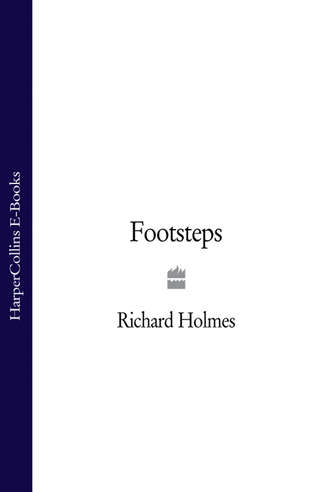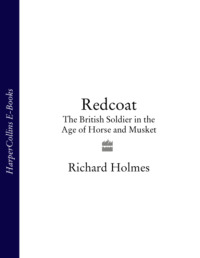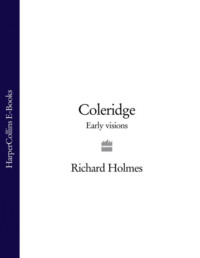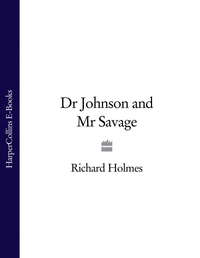
Полная версия
Footsteps
“Désolé, madame” I murmured; and that’s exactly how I felt: desolate. I was soon to grow familiar with this feeling. It is how every traveller feels at the approach of night, and the lighting up of windows in houses where he does not belong, and cannot enter in.
An old man stopped me, and talked, and took me by the arm. “Mais oui, la route de Monsieur Steamson—c’est par ici, prenez courage…” He led me to the outskirts of the town and showed me the vieux chemin, a glimmer of cart-track heading into the darkening, pine-fringed hills for Le Bouchet. Then, inexplicably, he took me back again, and. I was suddenly sitting in a little shoemaker’s cottage, under a yellow print of Millet’s Angelus, eating omelette and drinking red wine from a pitcher and laughing. I remember the old man’s dungaree blues, his black beret, his arthritic hands, still nimble and expressive, on the red check tablecloth. He was one of those who knew the story, as if it were part of village history. He spoke of Stevenson as if he had done his Travels in living memory, in some undefined time “avant la guerre” when he himself was a young lad, full of adventures.
“You see,” said the old man, “there is a time to kick up your heels and see the world a bit. I was like that too. And now I make shoes. That’s how things are, you will see.”
I slept out that night under an outcrop of pines, facing east on a slight incline, with the lights of Costaros far away to my left. The turf was springy, and the pine needles seemed to discourage insects. As I lay in my bag, a number of late rooks came winging in out of the gloaming, and settled in the pine branches, chuckling to each other. They gave me a sense of companionship, even security: nothing could move up through the trees below me without disturbing them. Once or twice I croaked up at them (it was the wine), and they croaked back: “Tais-toi, tais-toi.” This night I fell asleep quickly. Only once, waking, I drank two ice-cold mouthfuls of water from my can and, leaning back, saw the Milky Way astonishingly bright through the pine tops, and felt something indescribable—like falling upwards into someone’s arms.
At Le Bouchet, Stevenson slept in the same inn room as a married couple from Alais. They were travelling to seek work at St Etienne. Sharing rooms was normal practice in country auberges till the very end of the nineteenth century, but the woman was young and Stevenson was shy, for all his bohemian manners. “Honi soil qui mal y pense; but I was sufficiently sophisticated to feel abashed. I kept my eyes to myself as much as I could, and I know nothing of the woman except that she had beautiful arms, full white and shapely; whether she slept naked or in her slip, I declare I know not; only her arms were bare.”
In the morning the innkeeper made a goad for Modestine, while his wife briskly advised Stevenson about what should go into his travel-book. “‘Whether people harvest or not in such and such a place; if there were forests; studies of manners, what for example I or the master of the house say to you; the beauties of nature; and all that.’” Stevenson wrote her words down in his most winning manner, adding that the wife—unlike the husband—could read, had a share of brains, but was not half so pleasant. “‘My man knows nothing,’” he recorded her as saying with an angry toss of her chin. “‘He is like the beasts.’ And the old gentleman signified acquiescence with his head as if it were rather like a compliment.”
Their youngest daughter, who looked after the cattle, was rude and mischievous, until her father—without a flicker of expression—abruptly announced that he had sold her to the foreign monsieur to be his servant-girl. He appealed to Stevenson for confirmation.
Stevenson solemnly took up the game. “‘Yes,’ said I, ‘I paid ten half-pence; it was a little dear, but …’
‘But,’ the father cut in, ‘Monsieur was willing to make a sacrifice.’”
A little while after, the girl hurried out of the stone-flagged kitchen, and the sound of sobs came through from the stable next door, along with the munching and stamping of the cows and horses. Instantly Stevenson hurried after her, and put all right, closing the game in wild laughter. He had a quick rapport with children, and would play instinctively on their sense of mystery and adventure, half-entrancing and half-terrifying them. To be sold to a long-haired foreign traveller with a huge blue woollen sack was not much better than to be pursued by Blind Pew tap-tapping with his stick at the door of the Admiral Benbow inn.
Stevenson’s route now swung almost due south, up over the last high farmlands of the Velay to Pradelles, then down to the little market town of Langogne on the River Allier. Here he came to wild country, and a new phase in his pilgrimage of the heart.
He described the bleak prospect with the relish of an Edinburgh lowlander set free:
On the opposite bank of the Allier, the land kept mounting for miles to the horizon; a tanned or sallow autumn landscape, with black dots of firwood, and white roads wandering far into the Gévaudan. Over all this, the clouds shed a uniform and purplish shadow, sad and somewhat menacing … It was a cheerless prospect, but one stimulating for a traveller. For I was now upon the limit of the Velay, and all that I beheld lay in another county—wild Gévaudan, mountainous, uncultivated, and but recently disforested from the terror of wolves.
All that morning, as I tried to catch Stevenson up, I thought of wolves. Clambering over the flint farm-tracks, I watched the dark hills of Gévaudan before me, and saw no one but the figures of distant labourers working in the shimmering fields.
A curious gnawing pain began at my heel. Before Pradelles, the ball of my right foot split open, leaving something like a slice of best back bacon, which I held mournfully under the village pump. The doctor at Landos, with half-moon gold spectacles, hung out of his window and announced that he was having lunch. Then, seeing Le Brun very crestfallen, he added, “Mais montez, montez quand même.”
Scissors snapped, patent ointments oozed, and my proffered francs were waved aside. I limped out of Landos in a cloud of Pernod fumes, menthol and cocaine-gel.
Beyond Pradelles I bathed in another stream, this time discreetly shrouded by bulrushes. The heat was still stunning, and I lay back in the cool water, holding my bandaged foot solemnly in the air like a demented heron. I dozed, and the grumbling of distant thunder mixed in my dreams with the growling of those wolves of long ago.
But Stevenson was still three or four hours ahead of me. He crossed the stone bridge into Langogne in the early afternoon of Monday, 23 September 1878, “just as the promised rain was beginning to fall”. Here, however, he decided to settle for the rest of the day at the inn, and this I knew would give me my chance to catch up with him. Modestine was fed and stabled, and Stevenson sent his knapsack out for repair, then sank into a corner-seat to read up about the legendary “Beast of Gévaudan”.
This Napoleon Bonaparte of Wolves had terrorised the whole region in the mid-eighteenth century. Its exploits held a peculiar fascination for Stevenson. Roving in the remote hills between Langogne and Luc, it had viciously attacked small children guarding sheep, or lone women returning from markets at dusk. These attacks lasted throughout the 1760s. When the victims were found their bodies were always drained of blood, though not wholly devoured, and there were wild rumours of vampirism, or worse. The Bishop of Mende ordered public prayers to be said in the country churches on Sundays, and the Intendant of Languedoc organised armed wolf-hunts with parties of dragoons. The King himself eventually offered a reward of six thousand livres to whoever should slay the Beast.
It proved strangely elusive for several seasons, and the myths about the animal grew: its appearance on nights of the full moon, its liking for thunderstorms, its power to leap from one hilltop to the next or to appear in two places at once. Finally, in September 1765, a local shepherd called Antoine shot a huge wolf weighing nearly ten stone. Its body was stuffed and sent to the court at Versailles amidst great rejoicings. The local people felt a curse had been lifted from them.
How great was their horror when, less than two years later, in the spring of 1767, the attacks began again with even more frenzied violence. On the hills of the Lozère two teenage boys were virtually torn to pieces. The entire population of the Gévaudan lapsed into a state of superstitious panic; farming went neglected and almost no one would cross their doorsteps after dark.
The end when it came was curiously muted. One late June evening in 1767, Jean Chastel, a local woodsman, out hunting for the Beast, was attacked in a forest clearing by a large wolf which he shot at point-blank range with a single musket-ball. The kill really did bring the reign of terror to an end, and Chastel became a folk hero. Yet this second wolf was a common enough animal, with a tatty pelt, and weighing two stone less than its predecessor. The mystery of the Beast of Gévaudan always remained, and continued to haunt the region even in Stevenson’s time. He read a novel on the subject by Elie Berthet at Langogne.
“If all wolves had been as this wolf,” Stevenson remarked thoughtfully, “they would have changed the history of man.”
Modern studies of the subject, rich in explanations, were each more fantastic than the last. One school followed a vampire theory; another proposed a sadistic Gévaudan landowner who terrorised his tenants with a trained pack of hunting wolves; and a third, deeply psychological, produced Jean Chastel himself as a pathological killer dressed up in wolf-hides. But my favourite had a sinister simplicity. It proposed, as a strict zoological possibility, a rogue family of three wolves (like The Three Bears) who, ostracised from the main pack, had tasted the delights of human flesh, and thereafter attacked in combination. Hence the inexplicable ferocity of the Beast; and also its ability to be in two places at once. This theory had the great attraction of leaving one wolf still unaccounted for. I liked this very much.
It was sheer coincidence that on the final leg of my walk over the hills to Langogne, I had my first brush with a Cévennes storm. These storms are peculiar to this highland region, local and intense, fast-moving from one hilltop to the next, and teethed with forked lightning that terrified me. It overtook me rapidly from the west, and seemed to chase me over the bare pastures, until to my immense relief I came upon a hamlet in the fold of the hill, with a tiny café-épicerie where I took shelter for an hour, while the storm passed, banging and snarling and flashing overhead.
The cafe-owner, a small man in an extravagantly dirty apron, polished glasses philosophically in the doorway. The rain beat on the green awning while we talked disjointedly of Stevenson and storms.
“It is not always wise to go over the hills,” he observed, while cigarette ash from his yellow papier-maïs fell on his apron in the hot damp wind. There was something lugubrious about his down-turned mouth. He craned his head outside, looked sharply up at the lowering clouds and shrugged. “There, he is clearing away now.” He returned to the little zinc-topped bar, flapped at the thunder flies, coughed, shook his head (more ash) and wished me well in his own fashion. “So, you are going into Gévaudan. You will see him again, alors.”
I departed, draped in my waterproof sheet, my hat at a combative angle. The sun came out, and I made the last descent to Langogne, through drenched fields of grass full of gleaming buttercups. I felt oddly elated.
At a little after eight in the evening I at last crossed the bridge over the Allier into Langogne, the shadows lengthening along the streets. The shopkeepers were closing up their stalls, and the air was full of the smell of crushed fruit and frying garlic. It was the biggest place I’d been in for days, with a fine eleventh-century church and a medieval covered market. It was cheerful and bustling, with family groups sitting out on the pavements, couples strolling arm in arm along the river and children fishing for minnows with pink and yellow nets.
But here something strange happened. The feeling that Stevenson was actually waiting for me, in person, grew overwhelmingly strong. It was almost like a hallucination. I began to look for him in the crowds, in the faces at the cafe doors, at hotel windows. I went back to the bridge, took off my hat, rather formally as if to meet a friend, and paced up and down, waiting for some sort of sign. People glanced at me: I felt an oddity, not knowing quite what I was doing, or looking for. The twilight thickened; bats began to dart over the river. I watched their flickering flight over the gleaming surface, from one bank to the other.
And then I saw it, quite clearly against the western sky, the old bridge of Langogne. It was about fifty yards downstream, and it was broken, crumbling, and covered with ivy. So Stevenson had crossed there, not on this modern bridge. There was no way of following him, no way of meeting him. His bridge was down. It was beyond my reach over time, and this was the true sad sign.
The discovery put me in the blackest gloom. It was stupid, but I was almost tearful. I could not bear to stay in Langogne, and after a distracted supper I climbed the steep hill of rustling plane trees towards St Flour and Fouzilhac. It was pitch-black (my eyes had lost their “country” vision by dining under bright lights) but I was anxious to plunge into the Gévaudan. Below, to my left, I could hear a small river running through what I took to be a gentle-sloping water-meadow, and I fancied I would camp there. Turning off through the plane trees I jumped over a low stone wall and seemed to drop into a bottomless pit.
In fact, it was a fifteen-foot, stone-banked wall ending in a mass of thorn briars; below them, the ground shelved away directly into the river and, skidding and cursing through the blackness, I went with it. An hour later, wet to the waist, I was signing myself into the only hotel in Langogne that would take a doubtful traveller after midnight. Le Brun did his best, but the joke was thin. In my pocket I found my pipe broken off at the stem.
As I dropped off to sleep in my luxurious broom-cupboard I thought I would give the whole damn thing up.
I had mad dreams about children dancing round me in a mocking circle. They were waving nets and singing:
Sur le pont d’Avignon
On y danse, on y danse …
I thought a good deal about this dream. It seemed, in part, to be a projection of Stevenson’s own experiences, when, the following night, he was lost on the paths between Fouzilhac and Fouzilhic. He could find nowhere to stay as the darkness came on, and no one to give him directions. Instead he too met strange and dreamlike children.
As I came out on the skirts of the woods, I saw near upon a dozen cows and perhaps as many more black figures, which I conjectured to be children, although the mist had almost unrecognisably exaggerated their forms. These were all silently following each other round in a circle, now taking hands, now breaking up with chains and reverences … at nightfall on the marshes, the thing was eerie and fantastic to behold.
Partly also I came to think that my dream was a warning: a warning not to be so childish and literal-minded in my pursuit of Stevenson. The children were dancing and singing of the old bridge of Avignon: the bridge that is broken, just like the old bridge of Langogne. You could not cross such bridges any more, just as one could not cross literally into the past.
Even in imagination the gap was there. It had to be recognised; it was no good pretending. You could not play-act into the past, you could not turn it into a game of make-believe. There had to be another way. Somehow you had to produce the living effect, while remaining true to the dead fact. The adult distance—the critical distance, the historical distance—had to be maintained. You stood at the end of the broken bridge and looked across carefully, objectively, into the unattainable past on the other side. You brought it alive, brought it back, by other sorts of skills and crafts and sensible magic.
Have I explained myself at all? It is the simplicity of the idea, the realisation, that I am after. It was important for me, because it was probably the first time that I caught an inkling of what a process (indeed an entire vocation) called “biography” really means. I had never thought about it before. “Biography” meant a book about someone’s life. Only, for me, it was to become a kind of pursuit, a tracking of the physical trail of someone’s path through the past, a following of footsteps. You would never catch them; no, you would never quite catch them. But maybe, if you were lucky, you might write about the pursuit of that fleeting figure in such a way as to bring it alive in the present.
I awoke next morning in a different mood, and climbed the same hill in bright sunlight, in the company of a shepherd with his small black-and-white collie dog. The shepherd had been on the road eight days, he said, going to his cousins’ farm across the Tarn. He mended my pipe with a piece of waxed twine, cunningly tied.
Stevenson had a rough day on those hills. The weather was bad. He fell into bogs, lost his way in woods and finally found himself benighted in a storm at the inhospitable village of Fouzilhac. No one would cross their doorsteps to put him on the path for Cheylard. “C’est que, voyez-vous, il fait noir,” they told him. Stevenson implies that it was memories of the Beast of Gévaudan that made the men so reluctant. But he himself could not have looked an inviting figure by then: gaunt, long bedraggled hair, trousers caked in mud, and a strong whiff of the brandy-flask. No wonder everyone refused his requests to be shown the way with a lantern. The hour grew later, the rain heavier. He blundered on, alone.
Stevenson, for all his reputation as a dilettante, was determined and resourceful. The Scottish grit came out in just such a minor crisis as this. Abandoning all thoughts of civilisation, he pitched camp alone in the howling wind, under the lee of a dry-stone wall, tethering Modestine to a nearby pine branch and carefully feeding her chunks of black bread. He spread his sleeping-sack by the light of his spirit-lamp tucked into a crack of the wall. After removing his soaking boots and gaiters, he drew on a pair of long, dry woollen stockings, stuck his knapsack under the canvas top flap of the bag for a pillow, slid down into the woolly interior of the bag (still containing his books, pistol and spare clothes) and strapped himself in with his belt “like a bambino”. Here he proceeded to dine on a tin of Bologna sausage and a cake of chocolate, washed down with plenty of brandy from his flask, rolled and smoked “one of the best cigarettes in the world”, and dropped off to sleep like a child, contentedly lulled by the stormy sounds of wild Gévaudan. It struck me as an admirable feat in the circumstances.
The next morning, Wednesday, 25 September, he woke warm and refreshed, beneath the clear grey light of dawn and a brisk dry wind. Closing his eyes, he reflected for a moment how well he had survived, without once losing his temper or feeling despair. Opening them again, he saw Modestine gazing across at him with an expression of studied patience and disapproval. Hastily pulling on his boots, he fed her the remaining black bread, and wandered about the little beech wood where he now found himself, cheerfully consuming more chocolate and brandy. He was filled by one of those sensations of early-morning rapture which seem to affect people who have slept rough in the open. He later wrote:
Ulysses, left on Ithaca, and with a mind unsettled by the goddess, was not more pleasantly astray. I have been after an adventure all my life, a pure dispassionate adventure, such as befell early and heroic voyagers; and thus to be found by morning in a random woodside nook in Gévaudan—not knowing north from south, as strange to my surroundings as the first man upon the earth, an inland castaway—was to find a fraction of my daydream realised.
I loved this idea of the “inland castaway”. It seemed to me such a subtle, almost poetic idea, as if real travel were concerned with disorientation rather than merely distance. It was losing yourself, then finding yourself again: casting yourself, at least for one moment, into the lap of the gods, and seeing what happened. Of course I could understand that his literary talk of Homer, and later Bunyan, was partly self-mockery. But then it seemed to me it was partly serious as well, and that the “daydream” was a real thing for Stevenson, and that his travels were also a pilgrimage.
What puzzled me again was that “goddess”. Did he have some particular Circe in mind? Some woman who had cast a spell over him, perhaps? Were his own thoughts secretly “unsettled” by her, and was this pilgrimage an attempt to escape her—or appease her? As I padded along the silent woodland trails, deeper and deeper into Gévaudan, it slowly dawned on me that I might be pursuing a woman as well. Beyond Fouzilhac, which I never found at all, even in daylight, I stopped for an adder slowly uncurling itself off a large flat rock in my path. It was small and handsomely zigged, glossy black on soft beige, and moved aside with perfect dignity. At Cheylard, which is little more than a clearing with a few farms and a shrine, I stood for a long time beneath the wooden statue of Our Lady of All Graces.
We were now heading for the Trappist monastery of Notre Dame des Neiges. Stevenson, I supposed, had a conscience to examine. Our path went eastwards, over high moorland beyond the shelter of the Forêt de Mercoire, to Luc; then turned south again down a remote valley of the Allier towards La Bastide, where the Trappists lived on a thickly wooded hillside, in their ancient vows of poverty, chastity, obedience—and silence. Lay people from the outside would occasionally be granted permission to stay there “on retreat”, sharing the monks’ harsh routine, meditating and praying, and taking stock of their lives. For a lapsed Calvinist like Stevenson it was a not entirely foreign idea; for a lapsed Catholic like me it was only too familiar. A brief visit seemed unavoidable.
This leg of the journey took two days, broken by a night at Luc.
Stevenson slept at the comfortable auberge, after his Fouzilhac adventure; while I crossed the river and camped in a fragrant barn full of new-mown hay. I had again been caught by a storm crossing the moors between Cheylard and Luc, and I was glad of a roof-beam and the friendly, reassuring sound of munching cattle.
I had another dream. My path was an endless track of grey stone chippings that mounted through mauve heather to a bare sky. It seemed deserted but was full of unknown presences and pine stumps, as far as the eye could see. All were lightning-struck, a dead and ghastly white. A storm approached me from behind, trailing fingers of rain. Thunder booms set me running and gasping as my pack grew heavier and heavier. Someone was coming, chasing me, and prongs of lightning snapped down on the hill—to my right, to my left, then directly overhead. My heart beat with fear, and I ran and ran over the lonely moor, and my hair turned snow-white. I sat up and it was the whiteness of dawn. The cattle were chomping and the hay smelt sweet.
In the morning a farmer gave me a large bowl of coffee and tartines, and I was sick. I went down to the Allier, and bathed from a rock, and scrubbed some clothes. A fisherman, carrying a long cane rod, walked by with a sideways glance, curious. Long after he was gone I could see the gleaming tip of the rod moving on down the valley in the direction of La Bastide, like the antenna of some predatory insect. I felt like another species myself, a sort of animal cut off from the human world. I lay on the rock all morning in the hot sun, listening to the call of peewits and the sounds of the river.











